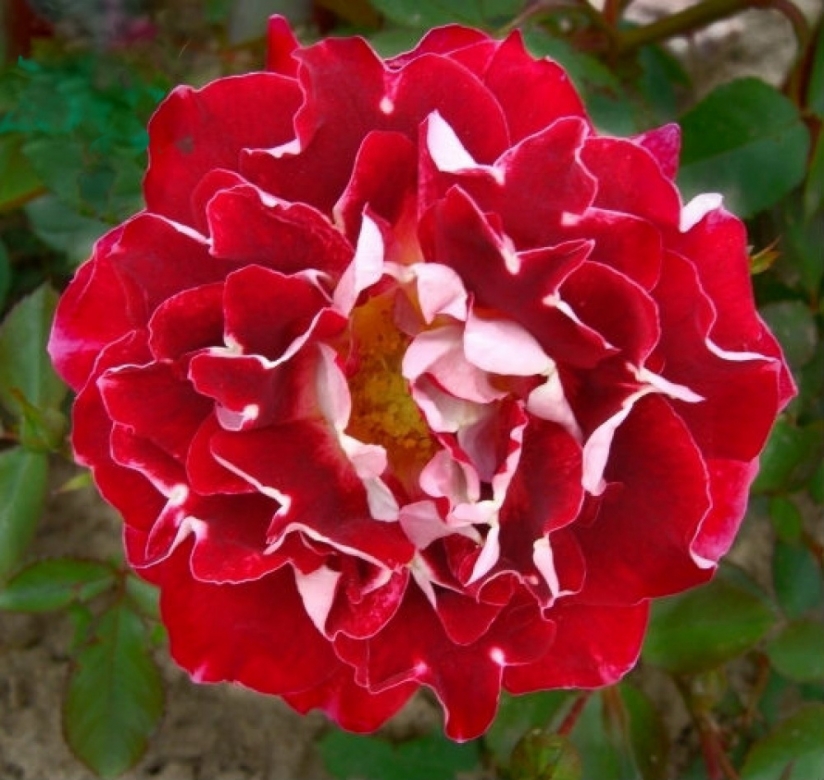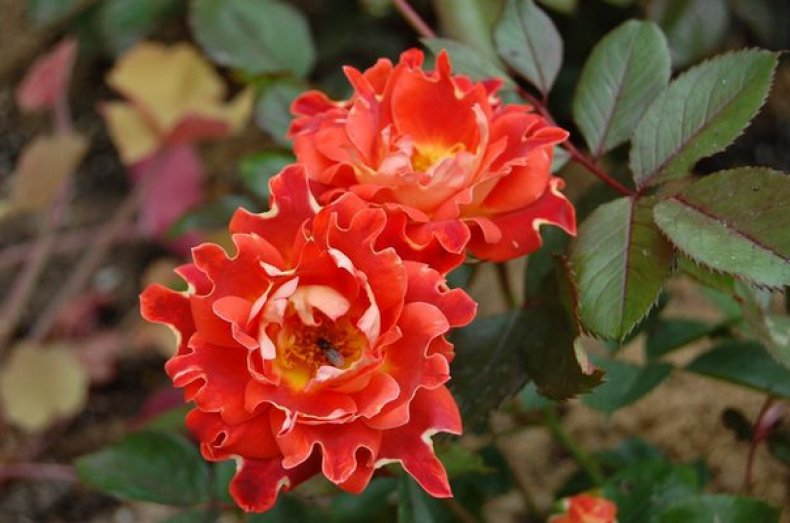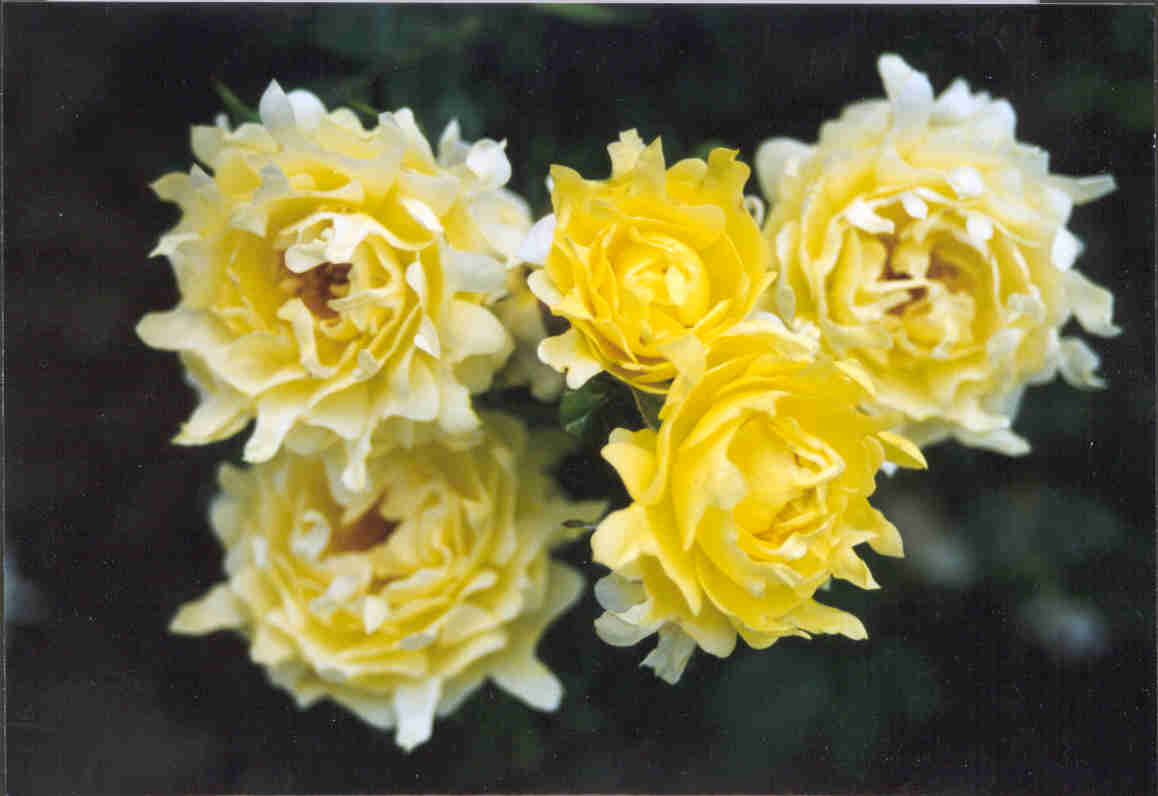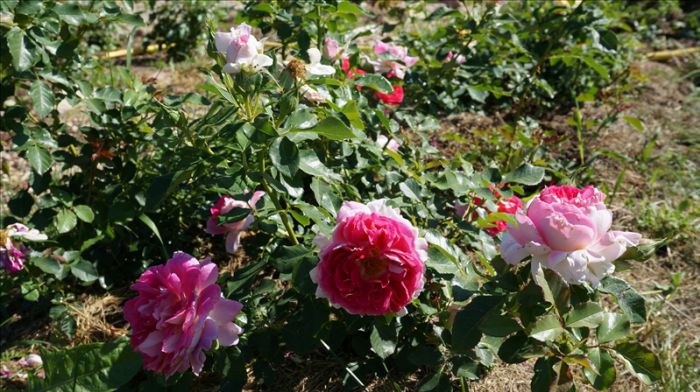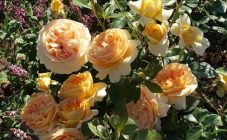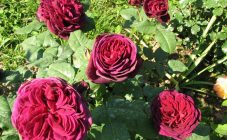Content:
It is already quite difficult to surprise modern rose lovers. There are a huge number of varieties of this flower, many of which are striking in their uniqueness. But the creators of the Raffles rose series succeeded.
general information
The company of Dutch origin "Interplant" was successfully engaged in the selection of roses Ruffles (rose ruffles). She went beyond most of her colleagues and paid particular attention to the shape of the petals. The result of work in this direction was the Raffles rose, or rather, a whole series of roses.
A characteristic feature of these short flowers, belonging to the Floribunda group, is the very heavily cut and curled edges of the petals. Actually, it was this feature that gave the series the name Raffles (English - corrugated).
The look of some varieties of Raffles roses is very exotic, the color is bright, interspersed with a variety of shades.
Rose bushes are not too tall, sprawling, have a rounded shape and are great for any flower garden. Some hobbyists also grow these flowers in pots.
Rose characteristic
In Russia, the name of Raffles roses is stuck - lace roses. The first copies of this series appeared in 2004.
The flower is characterized by a unique combination of corrugation of the petals with an erect and low bush (no higher than 60 cm), with a large number of branches. The leaves of the flower are glossy, have a dark green tint. The flowers are densely double, have a diameter of 8 cm, appear in clusters of 2 to 5 pieces and have a subtle aroma.
Flowering at Raffles is multiple and abundant, continuing until the end of autumn. The root system of rod-type roses, with a vegetative propagation method, is fibrous.
Description of varieties
Since the Raffles series is represented by a number of varieties, many gardeners will be interested in acquaintance with the most common Raffles rose varieties.
Indian Raffles
The Indian Raffles rose is a re-blooming flower with fairly large, double and wavy flowers. The shrub is upright and very branched. The rose blooms very profusely.
Indian Raffles rose inflorescences are burgundy in color, their diameter can vary from 6 to 8 centimeters. The stem grows from 2 to 5 flowers. The aroma is not very pronounced.
The variety is characterized by an average winter hardiness. The plant can withstand frosts down to -29 degrees, but only with good shelter. Disease resistance is weak. The rose has a particularly low resistance to powdery mildew.
Chocolate Raffles
Rose Chocolate Raffles has an unusual color and original petal shape. The inner part of the flower has the color of a juicy orange with splashes of yellow, which, as it moves away from the center of the flower, first turns into smoky, and then (to the very edges) into a burgundy-chocolate tone. The surface of the petals is very soft and velvety. As the description of the variety indicates, the aroma of the rose is rather weak, but pleasant. This feature allows you to plant a flower, including in the house of allergy sufferers.
The size of the inflorescence is quite large - from 6 to 8 centimeters. The edges of the petals are severely cut and turned outward.Flowers are located on the shoots in 3-5 inflorescences.
Best of all, chocolate ruffles rose grows in sunny and slightly shaded areas. Raffles chocolate tolerates low temperatures well, so the variety can be planted in not too warm regions. The most important thing is to provide the shrubs with the necessary insulation in the winter.
Sparkling Raffles
Rose Sparkling Raffles is a short shrub that grows to an average of 60 cm in height and 50 cm in width. The flowers are pink-red in color with a silvery edge. The stem usually has 3 to 5 flowers. All of them are densely double, have from 17 to 25 petals and jagged wavy edges. Sparkling Raffles rose has a light but very persistent scent. The Sparkling variety grows best in bright sunny colors and has medium resistance to sub-zero temperatures and high to heat.
Mystic Raffles
The rose mystique ruffles is a re-flowering plant with large dark red flowers with a light reverse. From 3 to 5 flowers grow on the stem. The flowers themselves are large, from 6 to 8 cm in size, double, have petals with carved edges. The aroma of the rose mystique is not very strong, but very persistent. The Mystic Raffles variety grows on average up to a height of 60 centimeters (under especially favorable conditions it can reach a height of 1 meter). The culture is very heat tolerant and moderately tolerant to subzero temperatures. One of the peculiarities of the variety is its very abundant flowering.
Splendid Raffles
Rose Splendid Raffles is a continuously flowering cultivar with dense double flowers with cut and wavy petals. The foliage of the plant is glossy. The bush grows to an average of 60 cm in height and 50 cm in width. The inflorescences of the flower are large enough - up to 8 cm, yellow. The number of flowers on one stem can vary from 2 to 5 pcs. The aroma of the flowers is subtle. The culture is able to survive sub-zero temperatures down to -20 degrees, provided there is a reliable shelter. The plant has average resistance to rain. The rose is practically not susceptible to diseases such as black spot and powdery mildew.
Romantic Raffles
Another of the Raffles Floribunda roses is the Romantic variety. They are characterized by a bright pink color, smoothly turning into red. The height of the bush usually varies from 40 to 60 cm, the width is up to 50 cm. The flowers of the plant are quite large. Their height can reach 8 cm. Flowers grow in tassels from 2 to 5 pieces. Abundant and multiple flowering. The shrub is upright, has glossy foliage. The plant has an average winter hardiness, well suited for planting in flower beds, containers or on curbs.
Features of agricultural technology
Growing the Raffles series requires the creation of the following conditions for the plant:
- good illumination;
- a sufficient amount of moisture;
- heat;
- soil fertility.
Loamy soils enriched with humus are best suited for planting crops. In wetlands, flowers usually do not take root. Flowers should be planted in late August or early September. But on cold soils, experts recommend doing the procedure in spring.
In the first year after planting, roses are not fertilized. Subsequently, they are fed after the spring pruning procedure. To do this, 3 kg of rotted manure and 25 grams of ammonium nitrate are introduced under each bush for each square meter of plantings.
Caring for rose bushes requires pruning. This procedure allows you to make the flowering more abundant, and the bush as spreading as possible.The procedure is carried out three times per season: in spring, summer and autumn. The main one is spring pruning. It is produced immediately after the cover is removed and before bud break.
After pruning, the plant is spud and preventive treatment for diseases is carried out.
Diseases and fight against them
With black spot, the bush becomes covered with brown or black spots. To prevent disease, roses should be covered, fertilized and pruned in a timely manner. If the problem has already arisen, it will be necessary to spray the roses with fungicides containing zinc and manokoceb.
Downy powder ash is caused by waterlogged soil and excessively cold and humid air. For prevention, the plant should be provided with constant access to fresh air. In addition, it is important to timely feed the culture with potash and phosphorus compounds.
If the disease has already affected the shrubs, the infected areas should be carefully removed and be sure to burn.
Raffles roses will become a real decoration of landscape design, provided they are properly cared for.
